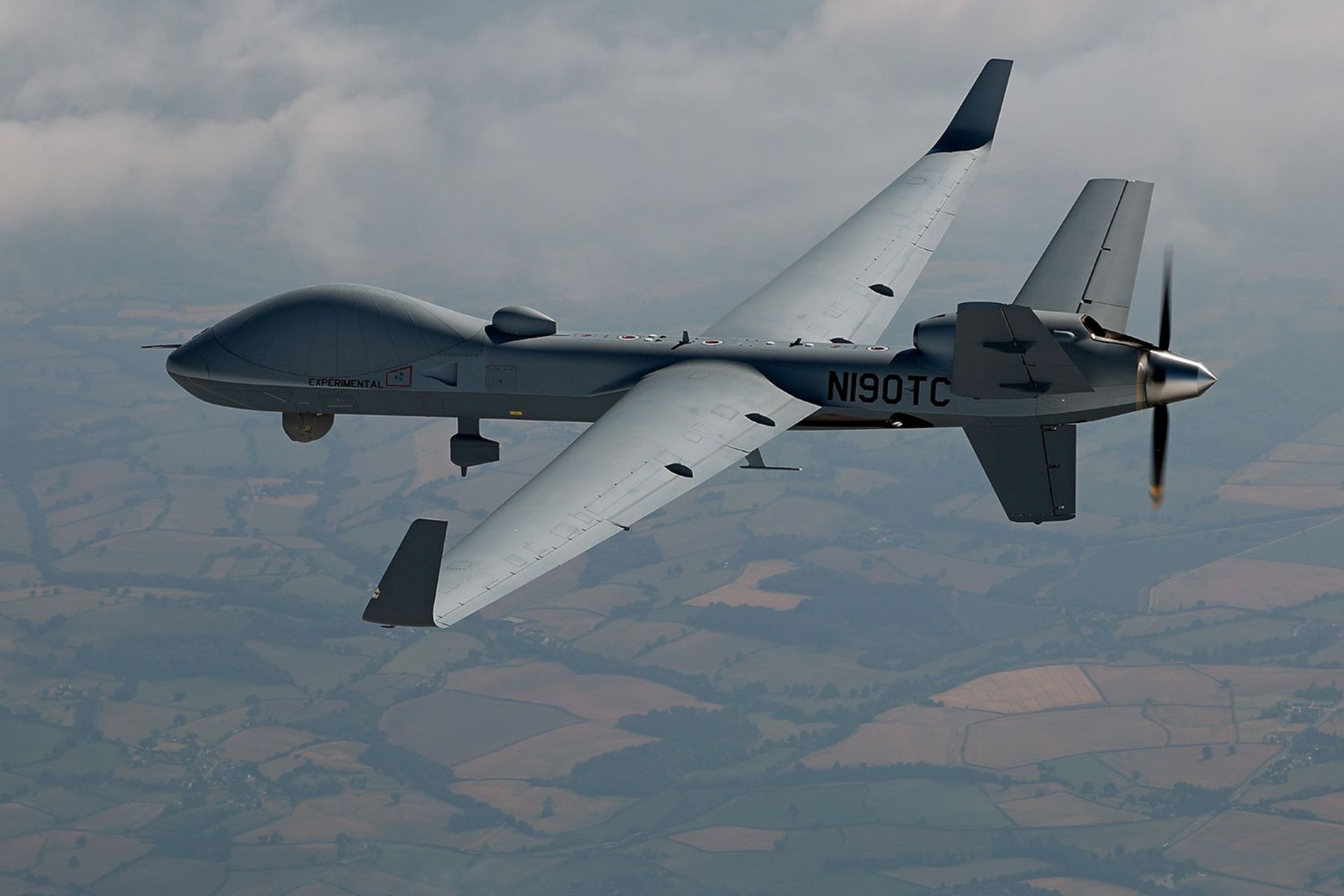Breaking News
Belgium Considers Arming its US-made SkyGuardian Drones Arriving by Year-End.
According to information published by La Libre on December 6, 2024, the next Belgian federal government is expected to approve the arming of its MQ-9B SkyGuardian drones. These drones, acquired in 2018 for a total cost of €160 million, have so far been restricted to reconnaissance and surveillance missions. However, ongoing discussions within defense institutions may lead to their use for offensive purposes, a decision that could significantly alter the country’s strategic landscape while raising ethical and legal concerns.

The first drones are expected to arrive at Florennes by the end of 2024, marking a pivotal moment in Belgium’s military modernization. (Picture source: GA-ASI)
Since their acquisition, the potential arming of Belgian drones has sparked intense debate. Proponents highlight the strategic advantages, such as rapid and precise responses to battlefield threats, reducing risks to soldiers. Armed drones have proven effective in recent conflicts, such as in Ukraine, where their ability to conduct targeted strikes has enhanced the security of ground forces and operational zones. Additionally, modernizing Belgium’s military capabilities would align with NATO allies, strengthening interoperability in joint operations.
The MQ-9B SkyGuardian drones, developed by General Atomics, are cutting-edge systems within the medium-altitude, long-endurance (MALE) remotely piloted aircraft category. With a wingspan of 24 meters, an endurance of over 40 hours, and the ability to operate in all weather conditions, these drones are designed for complex operations in both civilian and military environments. Equipped with Lynx multi-mode radar, advanced electro-optical and infrared sensors, and a detect-and-avoid system, the SkyGuardian can safely integrate into civilian airspace while providing robust observation capabilities.
One of the drone’s key features is its payload capacity, which reaches a maximum of 2,155 kg, distributed across nine external hardpoints and an internal bay. This flexibility allows for the integration of additional sensors or precision-guided munitions. Combined with a maximum speed of 210 knots and a range exceeding 6,000 nautical miles, these drones are suitable for both intelligence-gathering missions and offensive operations, should their arming be approved.
The question of arming the SkyGuardian drones presents complex challenges. Critics point to ethical concerns associated with armed drones and the broader implications of autonomous weapons. Although the SkyGuardian is not classified as an autonomous weapon, the establishment of a working group on this topic reflects unease regarding the potential evolution of these technologies. Furthermore, legal considerations are critical, as experts emphasize the importance of ensuring compliance with international conventions and Belgium’s rules of engagement, which could result in extended debates before any final decision is reached.
In June 2024, the first six Belgian crews completed the initial phase of their training at General Atomics in North Dakota. This training focused on operating the ground control station and processing data via the Mission Intelligence Station. The second phase, conducted in California, will enhance skills in intelligence, surveillance, and radar operations, including live flights. The final phase, in England and Belgium, will focus on ISR capabilities and include technical training for support personnel. The first drones are expected to arrive at Florennes by the end of 2024, marking a pivotal moment in Belgium’s military modernization.
Ongoing discussions reflect the need to thoroughly assess the long-term implications of arming these drones. If approved, this move would represent a significant evolution in Belgium’s military posture. Operationally, it would expand strategic options, particularly in terms of precision strikes and close support for ground forces. Additionally, armed drones could reduce reliance on costlier air assets, such as fighter jets, while enhancing the effectiveness of surveillance missions.
Arming the SkyGuardian drones could provide substantial strategic benefits while raising ethical and legal challenges. The final decision, still under discussion, will need to balance these factors to meet national security requirements while adhering to Belgium’s fundamental principles and international commitments.


























